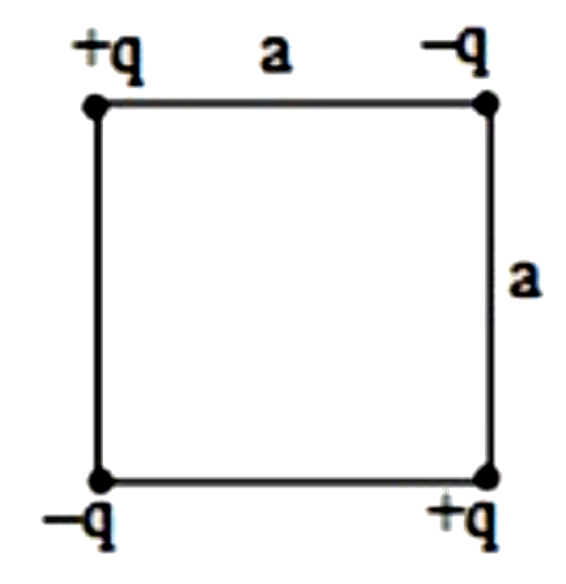Positive work is done on a system of two equal charges by an outside agent to bring both the charges together from infinite separation. Can the polarities of charges be determined from this fact?
To determine whether the polarities of the charges can be identified from the fact that positive work is done to bring two equal charges together from infinite separation, we can analyze the situation step by step.
1. Understanding the Charges: We have two equal charges. Let's denote them as Q1 and Q2. Since they are equal, we can say Q1=Q2=Q.
2. Identifying the Nature of Work Done: The question states that positive work is done on the system by an outside agent. This means that energy is being supplied to the system to move the charges closer together.
3. Considering the Forces Between the Charges: Since both charges are equal, they must either both be positive or both be negative. If they are both positive, they will repel each other, and if they are both negative, they will also repel each other. In either case, work must be done against the repulsive force to bring them together.
4. Potential Energy at Infinite Separation: At infinite separation, the potential energy of the system of charges is considered to be zero. As the charges are brought closer together, the potential energy increases due to the work done against the repulsive force.
5. Conclusion on the Polarities: Since positive work is required to bring the two equal charges together, we can conclude that both charges must be of the same polarity (either both positive or both negative). If they were of opposite polarities (one positive and one negative), they would attract each other, and no external work would be needed to bring them together.
6. Final Answer: Therefore, from the fact that positive work is done on the system, we can conclude that both charges are of the same polarity.
Topper's Solved these Questions
- ELECTROSTATIC POTENTIAL AND CAPACITANCE Book:MODERN PUBLICATIONChapter:ELECTROSTATIC POTENTIAL AND CAPACITANCE Exercise:Tough & Tricky PROBLEMS
Explore 10 Videos
- ELECTROSTATIC POTENTIAL AND CAPACITANCE Book:MODERN PUBLICATIONChapter:ELECTROSTATIC POTENTIAL AND CAPACITANCE Exercise:NCERT FILE Solved (Textbook Exercise)
Explore 11 Videos
- ELECTROSTATIC POTENTIAL AND CAPACITANCE Book:MODERN PUBLICATIONChapter:ELECTROSTATIC POTENTIAL AND CAPACITANCE Exercise:PRACTICE PROBLEMS 5
Explore 18 Videos
- ELECTROMAGNETIC WAVESBook:MODERN PUBLICATIONChapter:ELECTROMAGNETIC WAVESExercise:CHAPTER PRACTICE TEST
Explore 14 Videos
- MAGNETISM AND MATTERBook:MODERN PUBLICATIONChapter:MAGNETISM AND MATTERExercise:CHAPTER PRACTICE TEST FOR BOARD EXAMINATION
Explore 16 Videos
Similar Questions
Knowledge Check
The work done in moving a positive charge on an equipotential surface is
Afinite and positiveBinfiniteCfinite and negativeDzeroWork done in moving a positive charge on an equipotential surafce is
Afinite, Positive but not zeroBfinite, negative but not zeroCzeroDinfinite
Find out the amount of the work done to separate the charges at infinite distance.
View SolutionFind out the amount of the work done to separate the charges at infinite distance .
View SolutionFind out the amount of the work done to separate the charges at infinite distance.
View SolutionDetermine the work which has to be done to bring an electric charge e2=1 from infinity to a unit distance from a charge e1.
View Solution" A charge "q_(0)" is brought from infinity to the centre of a dipole.The work done is "
View SolutionNo work is done in taking a positive charge from one point to other inside a positive charged metallic sphere, while outside the sphere work is done in taking the charge from one point to other (towards the sphere). Explain.
View Solution


